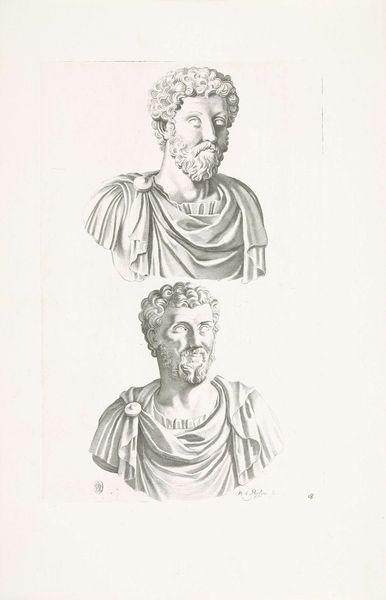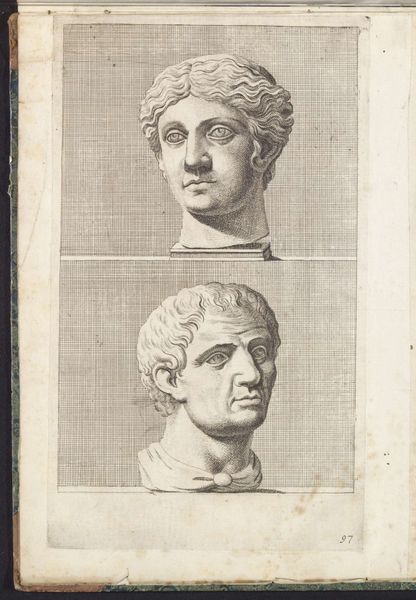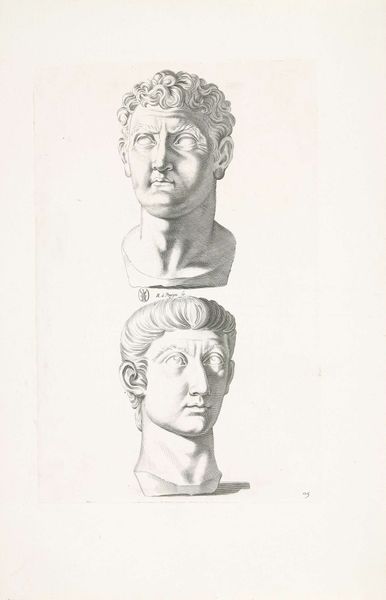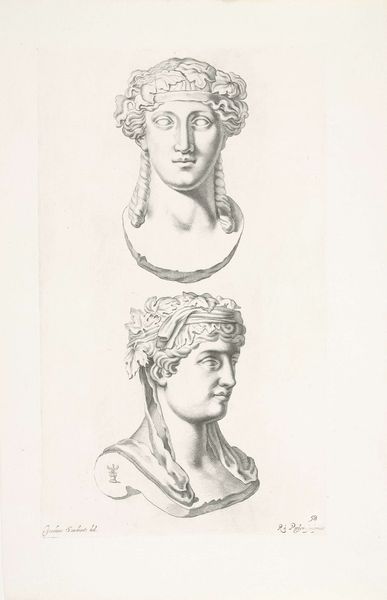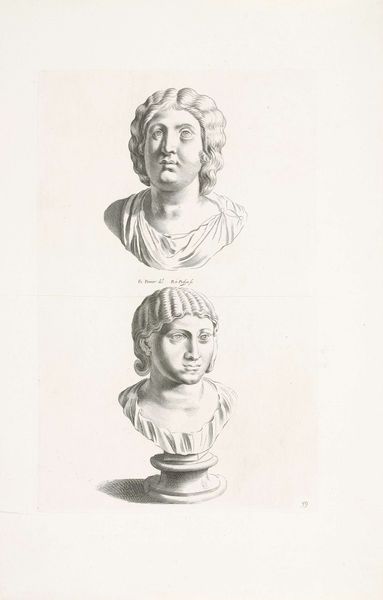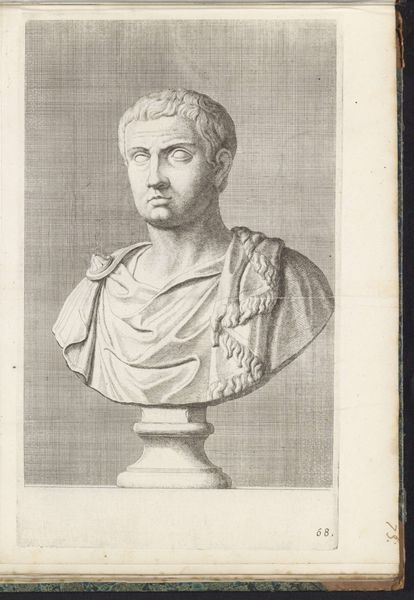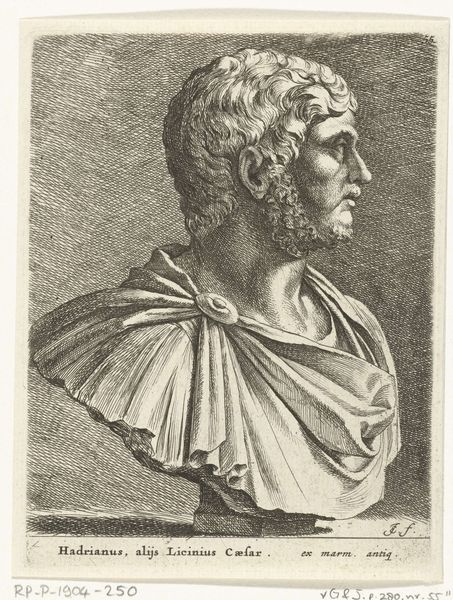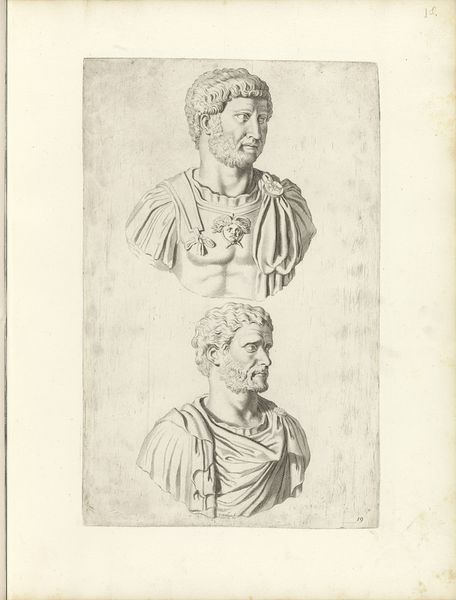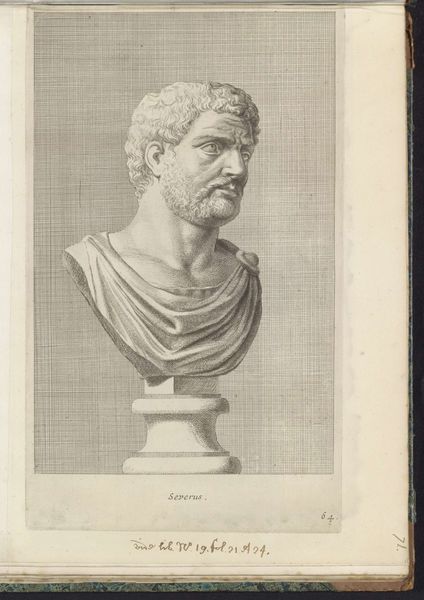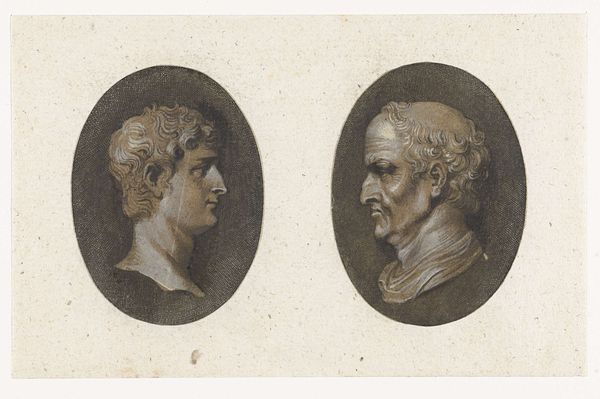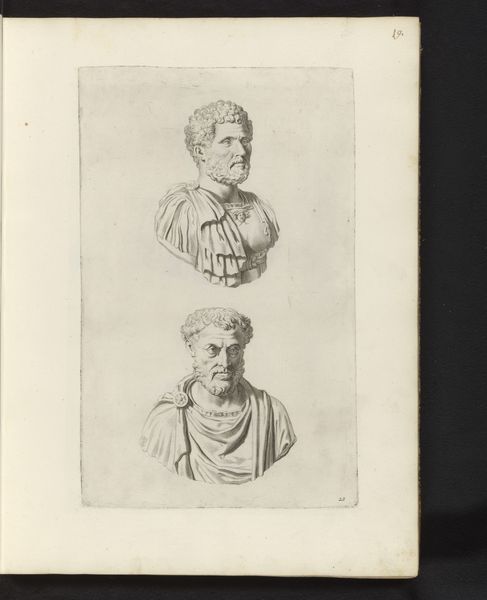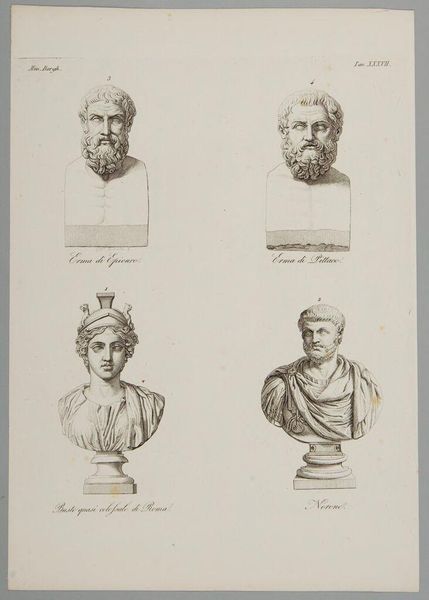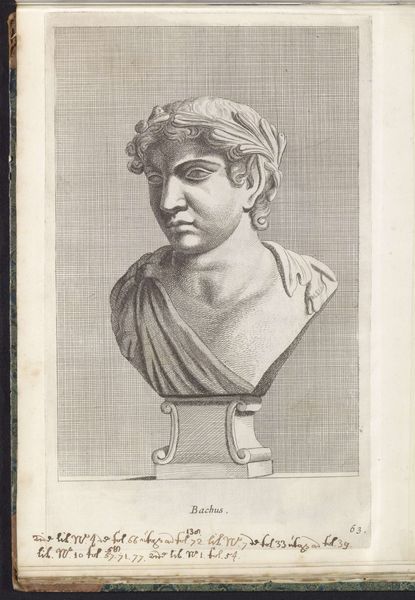
Twee portretbustes van keizer Lucius Verus en keizer Alessandro Severo 1640
0:00
0:00
drawing, paper, pencil, engraving
#
portrait
#
pencil drawn
#
drawing
#
classical-realism
#
charcoal drawing
#
paper
#
form
#
portrait reference
#
pencil drawing
#
ancient-mediterranean
#
pencil
#
line
#
portrait drawing
#
history-painting
#
academic-art
#
engraving
#
realism
Dimensions: height 394 mm, width 239 mm
Copyright: Rijks Museum: Open Domain
These two portrait busts of emperors Lucius Verus and Alessandro Severo were made by Reinier van Persijn in the 17th Century, using engraving on paper. Here, the artist used a printmaking process that requires a painstaking, specialized skill. Look closely, and you will see that the image is composed of thousands of tiny lines, each one carefully incised into a metal plate. This technique demands meticulous labor and precision. The printmaker translates the three-dimensional qualities of sculpture into a two-dimensional medium, playing with light and shadow to bring the marble-like busts to life on paper. Engraving was at the time an important form of reproduction but also stood alone as a valued art form. Van Persijn’s choice of portraying Roman emperors links this print to a classical tradition, yet the very act of engraving connects it to a burgeoning world of print and visual culture, accessible to a wider audience. Understanding the materials and the making helps us to appreciate the artistry and effort embedded in this work.
Comments
No comments
Be the first to comment and join the conversation on the ultimate creative platform.
